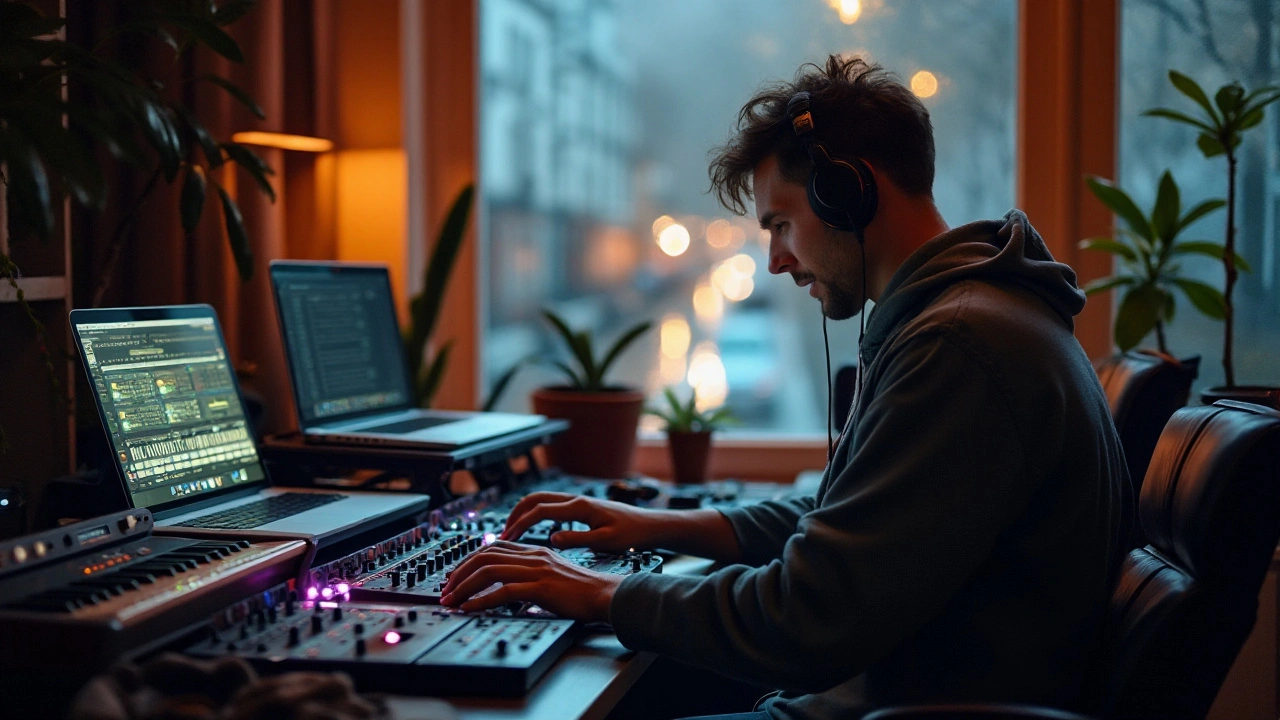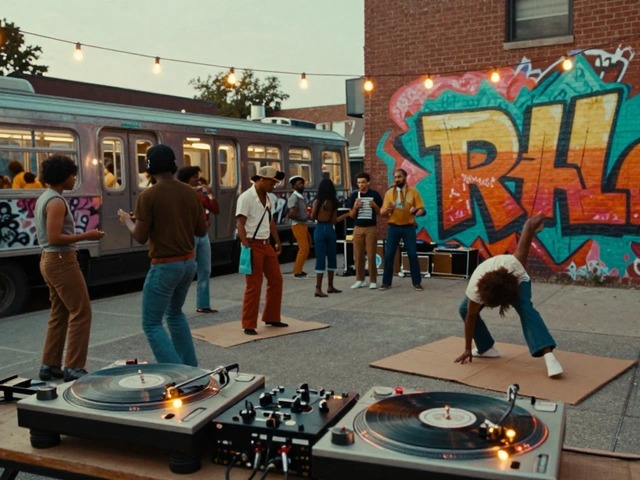In a world where music is a language of its own, electronic music stands out with its unique power to transform mundane sounds into aural masterpieces. The fusion of technology and artistry has birthed an ever-evolving genre that captivates listeners and producers alike.
Electronic music is more than just beats and melodies—it's a meticulous craft of sound design that involves an arsenal of modern tools and techniques. From the pulsating beats of dance floors to the immersive soundscapes of ambient tracks, this genre is anchored in creativity.
As the digital age forges ahead, the possibilities within electronic music continue to expand, unlocking new realms of auditory exploration. Whether you're a seasoned producer or a curious beginner, the journey into sound design is one filled with endless potential and innovation.
- The Evolution of Electronic Music
- Key Tools for Sound Design
- Techniques for Crafting Sounds
- Future Trends in Electronic Music
The Evolution of Electronic Music
The journey of electronic music is as intriguing as the genre itself, stretching back over a century. It all began in the early 20th century when innovative artists and engineers started experimenting with mechanical devices to generate sound. One of the earliest milestones was the invention of the Theremin by Professor Léon Theremin in 1920, a remarkable instrument that allowed players to create music without touching it. This groundbreaking invention sparked a wave of curiosity about the possibilities beyond traditional acoustic instruments, planting the seeds for what would eventually blossom into electronic music.
World War II accelerated advancements in technology, leading to significant developments in music production. Magnetic tape recording emerged in the 1940s, revolutionizing how sound could be manipulated and played back. This allowed artists to cut, splice, and overdub recordings, which became foundational techniques in music studios. Pierre Schaeffer, one of the pioneers of musique concrète, utilized these techniques to create compositions from recorded natural sounds, marking the beginning of a new era in sound design. "In any artistic endeavor, you must be willing to take risks," Schaeffer once remarked, highlighting the experimental spirit at the heart of electronic music.
As technology progressed into the 1960s and 70s, synthesizers came to the forefront. The Moog synthesizer, created by Robert Moog, became widely popular, not just within the avant-garde community but also among mainstream musicians. Bands like Kraftwerk and Tangerine Dream began incorporating electronic sounds into their music, leading to an entirely new genre: electronic music. The impact of these innovators paved the way for a myriad of sub-genres, from ambient to techno, which continue to thrive today within the music industry.
The digital revolution of the 1980s through the 2000s transformed the music production landscape. The introduction of MIDI (Musical Instrument Digital Interface) standardized digital communication, allowing various electronic instruments and computers to communicate efficiently. Software synthesizers and digital audio workstations (DAWs) such as Ableton Live and Logic Pro made music production more accessible than ever before. These tools democratized music creation, enabling independent artists to produce, mix, and master tracks from their own studios without the need for expensive equipment. During this period, electronic music firmly established itself in the mainstream through genres like house, trance, and drum and bass.
Today, electronic music continues to evolve rapidly, with producers constantly exploring new textures and pushing sonic boundaries. The rise of AI and machine learning in music production is leading to innovative forms of sound design, allowing producers to harness technology in unprecedented ways. Artists like Brian Eno have embraced these technologies, crafting complex, algorithm-driven compositions that challenge traditional conceptions of music. As electronic music becomes ever more integrated with technology, it stands as a testament to the genre's adaptability and endless potential for innovation. The future of electronic music looks brighter than ever, promising exciting developments and a continued impact on the global music scene.
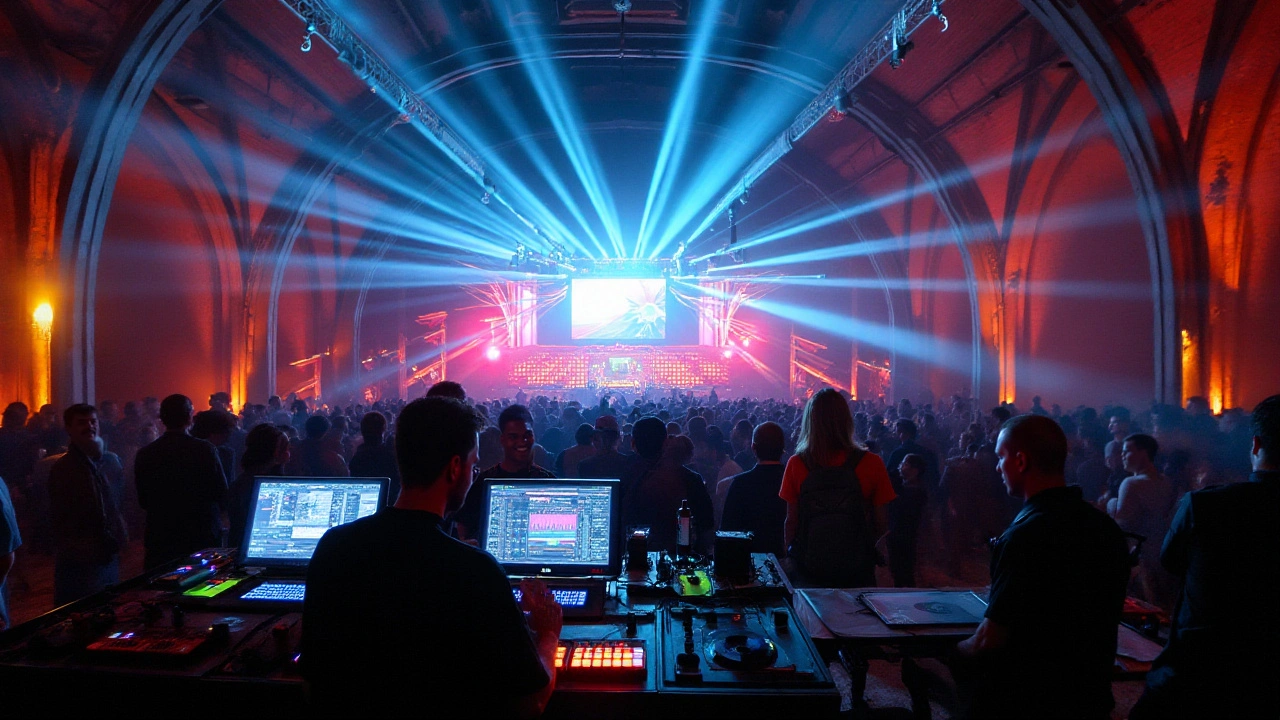
Key Tools for Sound Design
The landscape of electronic music revolves heavily around the innovative tools that enable artists to craft unique auditory experiences. At the core of these tools lies the synthesizer, an instrument that has become synonymous with electronic sound design. Synthesizers provide musicians the ability to generate and manipulate sounds in ways acoustic instruments cannot. Whether it’s analog or digital, these devices offer a range of oscillators, filters, and envelopes that allow producers to sculpt sound with precision. The versatility of synthesizers makes them indispensable in creating both subtle textures and commanding lead lines. Notable models like the Moog Minimoog or the Roland TB-303 hold a revered place in music history and continue to inspire modern-day producers.
Another critical component in the sound design toolkit is the digital audio workstation, commonly known as a DAW. Software like Ableton Live, FL Studio, and Logic Pro X serve as the digital canvas where creativity comes to life. These platforms provide a comprehensive suite of tools for recording, arranging, and producing music, all in a user-friendly interface. DAWs are equipped with numerous plugins which emulate classic hardware instruments or introduce new digital-only sounds, expanding the possibilities for composers. With powerful features like MIDI sequencing, audio processing, and automation, producers can bring their most intricate ideas to fruition.
“The DAW is essentially the modern musician's playground, providing everything needed to shape and transform sound in meaningful ways.”—Brian Eno, musician and producer.
Effects units also play a pivotal role in shaping electronic music. Devices such as the reverb unit, delay pedal, and distortion module add depth and dimension to sound, creating atmospheres and textures that define a track's character. For instance, a lush reverb can transport listeners to cavernous spaces, while modulation effects like chorus or phaser can thicken sounds, adding richness and movement. These effects can be implemented both in hardware form and as software plugins integrated within a DAW, offering flexibility for artists working in different environments.
Synth Modules and Controllers
With the resurgence of modular synthesis, many producers are increasingly turning toward synth modules to push the boundaries of sound design. Modular synths offer a highly customizable approach, allowing users to build their systems from individual modules like oscillators, sequencers, and filters. This modularity offers an unparalleled level of control over the synthesis process, inviting experimentation and innovation. Equally important are MIDI controllers, which facilitate a hands-on approach to music production. These devices range from keyboard controllers to grid-based systems like the Novation Launchpad, enabling tactile interaction with a DAW and bridging the gap between software and live performance.
For those venturing into music production, understanding and mastering these tools is paramount. The art of crafting sounds is as much about exploring the technical aspects as it is about letting one's creativity roam free. As technology advances, the arsenal of tools available to producers continues to grow, opening up new avenues for sonic exploration. By embracing the myriad possibilities that these key tools offer, electronic musicians can craft truly original and impactful soundscapes that resonate with audiences worldwide.
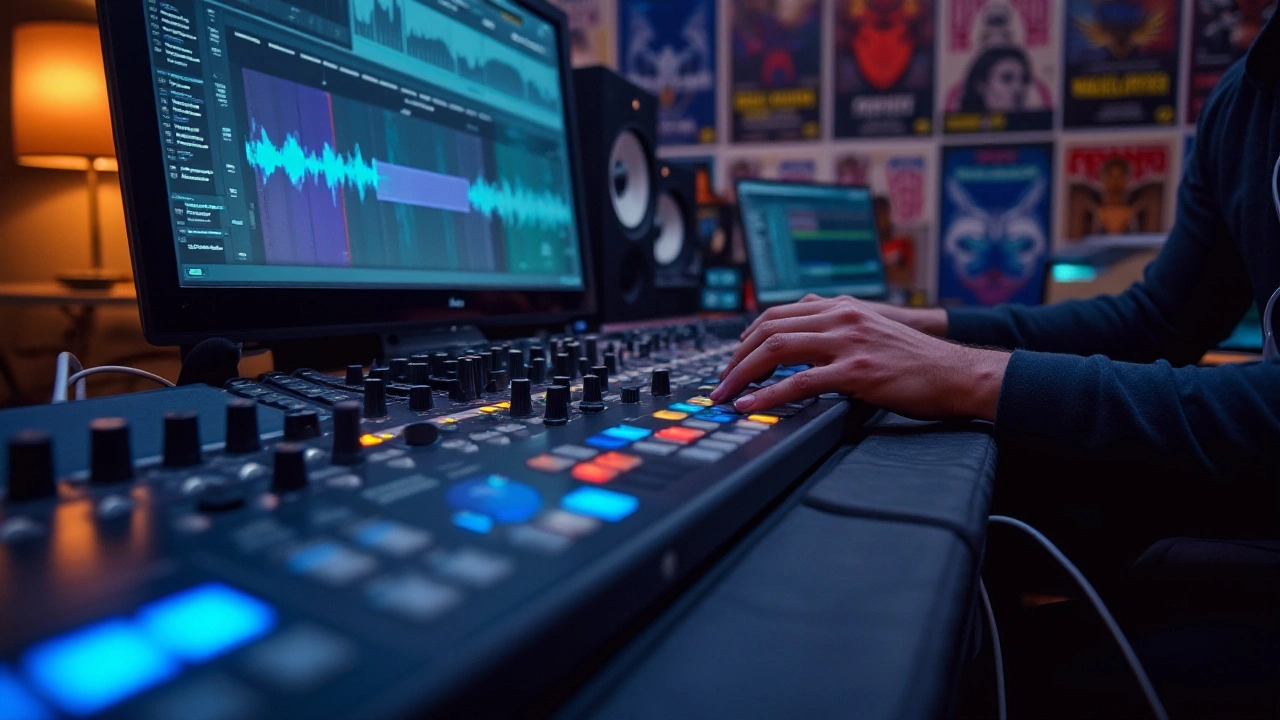
Techniques for Crafting Sounds
Crafting sounds in the realm of electronic music is akin to painting with a spectrum of tones and textures, where each layer adds depth and emotion to the auditory canvas. One pivotal technique is sound synthesis, which involves the generation of sound waves through various synthesis methods. Subtractive synthesis, for instance, shapes sounds by filtering harmonically rich waveforms like sawtooth or square waves. This approach allows producers to chisel away frequencies, carving distinct tones that can evolve over time. On the other hand, additive synthesis builds sounds by layering sine waves, allowing for precise control over harmonic content. These methods, among others, forge the auditory foundation of electronic music production.
Sampling is another cornerstone technique, where pre-recorded sounds are manipulated and integrated into a composition. This method became prominent with the advent of affordable samplers, granting producers the ability to repurpose existing audio and imbue tracks with unique character. Producers often employ sampling not just for standalone sounds, but also to capture the essence of acoustic environments or vintage recordings, enriching their work with layers of depth. The artful manipulation of samples can lead to entirely unexpected and innovative outcomes.
A modern marvel in sound design is the advent of digital audio workstations (DAWs), which have revolutionized how music is created and orchestrated. These platforms offer a wide array of music production tools, including virtual instruments, effects, and modular routing capabilities. DAWs enable non-linear arrangement of tracks, promoting versatility and spontaneous creative expression. Producers often harness automation within DAWs to inject movement into sounds, adjusting parameters such as volume and filters to create dynamic progressions. This capability transforms static loops into living compositions, breathing life into electronic tracks.
Beyond the realm of synthesis and sampling lies the world of effects processing, which serves as the secret sauce in shaping distinctive sound signatures. By applying effects like delay, reverb, and distortion, producers can transform raw sounds into ethereal soundscapes or gritty textures. For instance, reverb paints an audio image of spatial dimensions, from the intimacy of small rooms to the vastness of cavernous spaces. Delay adds rhythmic complexity through echoes, while distortion imparts harmonic richness and intensity. The judicious application of these effects contributes significantly to the emotive quality and uniqueness of electronic music productions.
Creative professionals often cross the threshold into experimental techniques, pushing boundaries to discover novel sounds that defy conventional norms. Granular synthesis, for instance, deconstructs audio into tiny grains, which can be rearranged, stretched, or processed individually to generate new textures. This granular approach opens a gateway to exploring complex soundscapes that evolve in unexpected ways. Aligning with this innovative spirit, modular synthesizers offer vast sonic potential, allowing for the intricate patching of modules to create unique and often unpredictable results.
As technology advances, it continuously redefines the landscape of electronic sound design. Machine learning algorithms, for example, are increasingly facilitating innovative approaches to generating and modifying sounds. These advancements are not only expanding the toolkit available to music producers but are also fostering collaboration between musicians and technology in unprecedented ways. The result is a fertile ground for musical exploration, where electronic music continues to surprise and captivate audiences around the world.
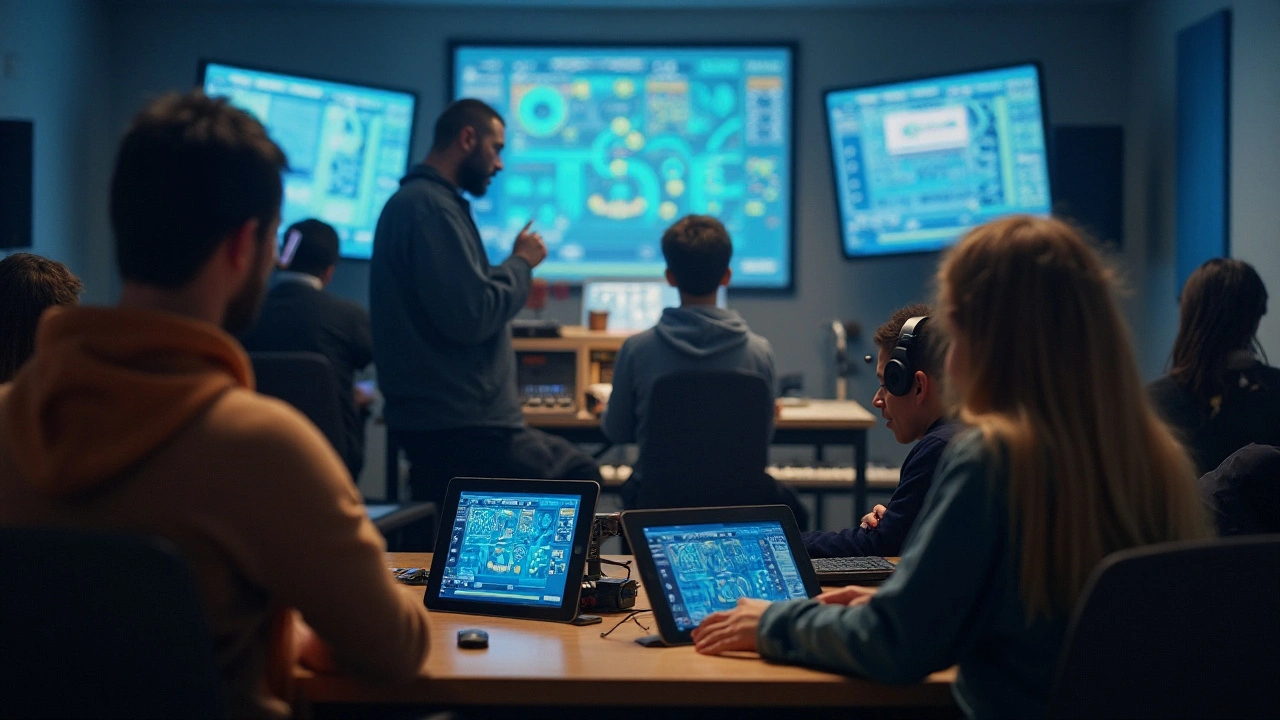
Future Trends in Electronic Music
The landscape of electronic music is perpetually evolving, driven by technological advancements and shifting cultural trends. As we stand on the brink of a new era, it’s fascinating to ponder what the future holds for this dynamic genre. One trend expected to continue its ascent is the integration of artificial intelligence in music production. AI is increasingly being used to assist in generating complex rhythms, harmonizing melodies, and even recommending personalized sound textures to fit a producer's unique style. The remarkable ability of AI to analyze and learn from vast datasets offers artists new possibilities, pushing the boundaries of creativity and innovation. Already, various AI-driven platforms are emerging, capable of sparking inspiration and enhancing the production process.
Virtual reality and augmented reality are also poised to redefine how we experience electronic music. With VR and AR technologies evolving rapidly, immersive concert experiences are becoming more accessible, allowing fans to attend virtual gigs from their living rooms. These technologies open new doors for interactive and personalized music experiences, engaging audiences on a deeper level. Imagine donning a VR headset and finding yourself in a fully immersive digital festival, where you can move through stages and interact with artists and fellow fans. This futuristic concept is turning into reality, hinting at a future where physical boundaries are no longer a limitation for musicians and audiences alike.
Environmental consciousness is another important trend shaping the trajectory of electronic music. As the world grapples with climate change and sustainability issues, artists and event organizers are increasingly considering their environmental footprint. Festivals and events are now focusing on reducing waste and promoting sustainability by implementing comprehensive eco-friendly strategies, such as using renewable energy sources and offering biodegradable products. These initiatives reflect a growing awareness and responsibility within the industry, as more artists are using their platforms to advocate for positive environmental change. This shift not only aligns with the values of many music enthusiasts but also promises to influence the culture and practices within the industry in the coming years.
A notable statistic that underscores this shift is presented in a recent survey, revealing that over 70% of festival-goers prioritize sustainability when choosing events to attend:
| Factor | Importance (%) |
|---|---|
| Sustainability | 70% |
| Line-up | 85% |
| Cost | 65% |
Finally, the demand for representation and diversity is only set to grow stronger. As the world becomes more interconnected, there's an ever-increasing emphasis on celebrating diverse voices and sounds within electronic music. Producers and musicians from varied cultural backgrounds are infusing their unique influences into their work, enriching the genre with a tapestry of global sounds. This trend not only adds depth and richness to the music but also drives the industry's evolution as it becomes more inclusive and representative of a broader spectrum of voices.

